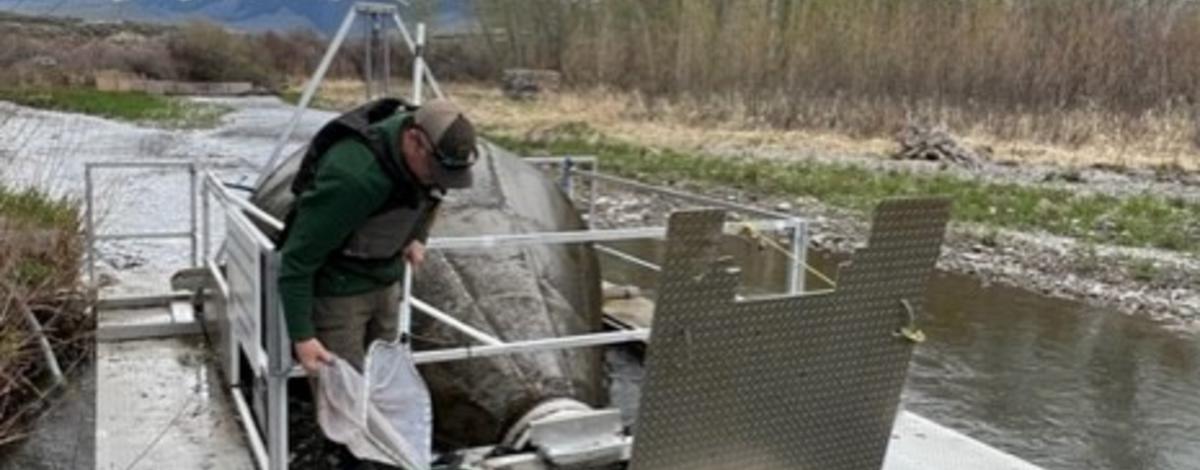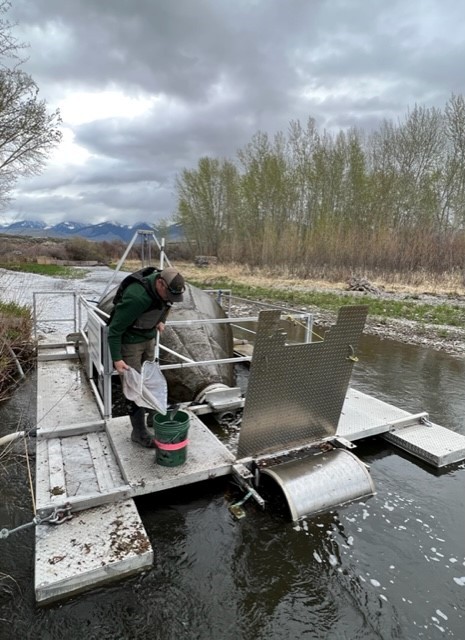Idaho Fish and Game biologists spend a lot of time collecting information about Idaho’s salmon and steelhead populations. These fish travel huge distances over their lifespan, so understanding those migrations are key to managing healthy populations. One of the best ways to do that is by collecting young fish as they leave their home streams on their journey to the ocean.
Young salmon and steelhead heading to the ocean are called smolts, others are called parr. In many places, Fish and Game uses a rotary screw trap, which is basically a big cone that sits on pontoons floating on the river. When the cone is lowered into the water, the trap can collect some of the smolts as they swim downstream. The young salmon and steelhead scooped up in the cone are passed into a tank at the back of the trap.


